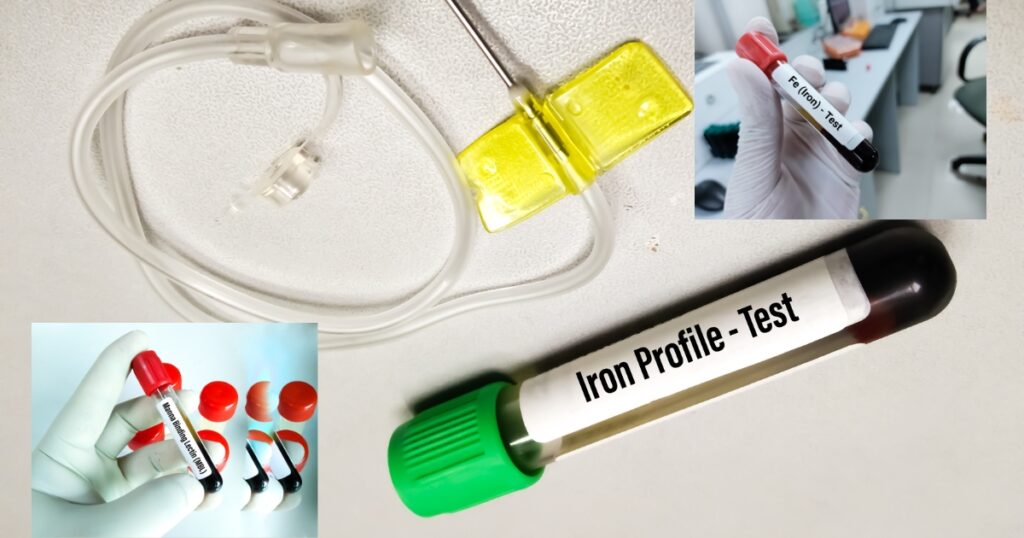Picture this: you’re feeling constantly fatigued, struggling to muster the energy for even the simplest of tasks. Your mind feels foggy, and no amount of rest seems to alleviate the heaviness weighing you down. You chalk it up to stress or lack of sleep, but what if there’s more to the story?
Understanding “What Does Low Iron Saturation Mean” goes beyond the surface-level fatigue. It’s about unraveling the intricate connection between your body’s iron levels and your overall well-being. So, let’s delve into the depths of iron saturation to decode its significance.
Table of Contents
ToggleDeciphering Iron Saturation: A Comprehensive Overview
Iron, often hailed as the unsung hero of our body’s functionality, plays a pivotal role in various physiological processes. From oxygen transport to energy production, this mineral is indispensable. But what exactly is iron saturation?
In simple terms, iron saturation refers to the percentage of binding sites on hemoglobin—the protein responsible for carrying oxygen in your blood—that is occupied by iron. It’s a key indicator of your body’s iron status, offering valuable insights into your health.
Now, let’s address the burning question: What does low iron saturation mean?
When your iron saturation levels plummet, it’s often a red flag for iron deficiency, a condition characterized by insufficient iron levels in the body. This deficiency can manifest in various ways, from mild fatigue to more severe symptoms like pale skin, shortness of breath, and even heart palpitations.
But why does this matter? Well, the implications of low iron saturation extend far beyond mere tiredness. Iron deficiency can lead to anemia, a condition where your body lacks enough healthy red blood cells to carry adequate oxygen to your tissues. Left untreated, it can wreak havoc on your overall health, impairing cognitive function, weakening the immune system, and impacting your quality of life.
So, what causes low iron saturation? The culprits are manifold, ranging from inadequate dietary intake of iron-rich foods to underlying health conditions like gastrointestinal disorders or menstrual blood loss.
Diagnosing low iron saturation involves a series of tests, including serum iron, ferritin levels, and total iron-binding capacity (TIBC). These tests provide valuable insights into your iron levels and help guide appropriate treatment.
But fear not, for there’s hope on the horizon. Treatment for low iron saturation typically involves iron supplementation, coupled with dietary modifications to boost iron intake. Incorporating iron-rich foods like spinach, lentils, and red meat into your diet can make a world of difference.
In conclusion, deciphering iron saturation is not just about numbers on a lab report—it’s about understanding the intricate dance of nutrients within your body and taking proactive steps to optimize your health. So, the next time you feel that familiar wave of exhaustion washing over you, consider delving deeper into the realm of iron saturation. Your body will thank you for it.
The Vital Role of Iron: Understanding its Importance

Iron isn’t just a mineral we casually encounter; it’s a powerhouse nutrient that keeps our bodies humming along smoothly. From the moment we’re born, iron steps up to the plate, orchestrating essential functions that are vital for our survival. So, let’s dive deep into the world of iron and uncover why it’s so crucial for our health.
Iron is like the MVP of our body’s team. Its main gig? Help transport oxygen throughout our bodies via hemoglobin, a protein found in red blood cells. Think of hemoglobin as a fleet of tiny oxygen delivery trucks, shuttling those precious O2 molecules to every nook and cranny of our bodies. Without iron, these trucks would be sitting idle, and our cells would be left gasping for breath.
But wait, there’s more! Iron also plays a starring role in energy production. It’s like the spark plug in our metabolic engine, helping convert food into fuel (in the form of ATP) that powers everything we do, from blinking to running marathons.
And let’s not forget about its contribution to our immune system. Iron helps our immune cells grow and mature, arming our bodies with the tools they need to fend off invaders and keep us healthy.
Now, let’s get back to our main question: What does low iron saturation mean?
When your iron saturation levels drop, it’s like putting a wrench in the works of a well-oiled machine. It’s often a sign that your body is running low on iron, which can lead to iron deficiency anemia. This condition can leave you feeling exhausted, weak, and generally not yourself.
Understanding the importance of iron and its role in iron saturation is crucial because it highlights just how interconnected everything in our bodies is. Neglecting our iron levels can throw off the delicate balance of our biochemical processes and leave us feeling less than our best.
So, the next time you’re chowing down on a juicy steak or digging into a bowl of spinach, remember that you’re not just eating; you’re fueling your body with the essential nutrients it needs to thrive.
Demystifying Low Iron Saturation: What Does it Signify?
Ever pondered over the mystery of low iron saturation? It’s time to peel back the layers and uncover the true significance behind this common health concern.
Low iron saturation acts as a silent messenger, whispering clues about your body’s iron levels. Essentially, it indicates that there isn’t enough iron available to fully saturate your hemoglobin—the oxygen-carrying protein in your blood. This deficiency can trigger a range of issues, from nagging fatigue to more serious conditions like iron deficiency anemia.
But why should you care about low iron saturation? Think of it as your body’s way of waving a red flag, signaling that it needs attention. Ignoring it could lead to further complications down the line. That’s why it’s crucial to decode the signs and take proactive steps to address any underlying imbalances.
Unveiling the Symptoms: Recognising Low Iron Saturation

Low iron saturation isn’t just a sneaky culprit; it comes with a distinct set of symptoms that demand attention. Recognizing these signs is your first line of defense in addressing the underlying issue and restoring equilibrium to your body.
So, what are these telltale signs? Symptoms of low iron saturation can vary but often include persistent fatigue, weakness, shortness of breath, and paleness. You might also experience dizziness, headaches, or a racing heartbeat.
While these symptoms might seem innocuous, they serve as your body’s way of raising the alarm. If you notice any of these signs, it’s crucial to consult with a healthcare professional to uncover the root cause and plot a course of action.
Root Causes of Low Iron Saturation: Exploring Underlying Factors

Low iron saturation doesn’t materialize out of thin air—it’s often a symptom of deeper issues lurking beneath the surface. Understanding these root causes is essential for devising an effective treatment plan and restoring harmony to your body.
So, what might be behind your low iron saturation levels? Dietary factors play a significant role, as insufficient intake of iron-rich foods can deplete your stores over time. Other factors, such as gastrointestinal disorders, menstrual blood loss, or chronic illnesses, can also contribute to low iron saturation.
Identifying and addressing these underlying factors is crucial for managing low iron saturation and preventing further complications. This may involve dietary adjustments, supplementation, or addressing any underlying health conditions.
Diagnostic Insights: Tests for Assessing Iron Saturation Levels

When it comes to low iron saturation, knowledge is power—and diagnostic tests are the key to unlocking valuable insights into your iron status. These tests provide essential information that guides treatment strategies and helps restore balance to your body.
So, what tests are commonly used to assess iron saturation levels? One of the most frequently employed is the serum iron test, which measures the amount of iron circulating in your blood. Additionally, the ferritin test gauges your body’s iron stores, while the total iron-binding capacity (TIBC) test assesses your body’s ability to bind and transport iron.
These tests, coupled with a comprehensive medical evaluation, offer a comprehensive view of your iron status and aid in identifying any underlying issues that require attention.
Health Implications of Low Iron Saturation: Potential Risks and Complications

Let’s delve into the health implications of low iron saturation—because it’s not just a minor inconvenience, it’s a potential health hazard. Understanding these risks and complications is crucial for taking proactive steps to address the issue.
When your body’s iron levels dip below optimal, it can lead to a cascade of health problems. One of the most common outcomes is iron deficiency anemia, a condition characterized by fatigue, weakness, shortness of breath, and pale skin. But the impact doesn’t end there. Chronic iron deficiency can impair cognitive function, weaken the immune system, and increase the risk of complications during pregnancy.
But that’s not all. Low iron saturation can also contribute to other health issues, including heart palpitations, restless leg syndrome, and hair loss. Left untreated, these problems can significantly affect your quality of life and overall well-being.
Understanding the potential risks and complications of low iron saturation is the first step toward taking control of your health. By recognizing these consequences, you can work with your healthcare provider to develop a plan that addresses the underlying causes and prevents further complications.
Navigating Treatment Options: Strategies for Addressing Low Iron Saturation
The good news is that low iron saturation is treatable, and there are several strategies available to help restore balance to your body. Navigating these treatment options effectively is key to improving your iron levels and overall health.
One of the most common treatments for low iron saturation is iron supplementation. These supplements come in various forms, including oral tablets, liquid solutions, and intravenous injections, and can help replenish your body’s iron stores. It’s essential to work with your healthcare provider to determine the right type and dosage of iron supplementation for your needs.

In addition to supplementation, dietary adjustments can also play a crucial role in improving iron saturation levels. Incorporating iron-rich foods such as lean meats, leafy greens, beans, and fortified cereals into your diet can help boost your iron intake and support healthy iron levels.
For those with specific dietary restrictions or preferences, alternative treatment options such as iron infusions or transfusion therapy may be recommended. These treatments involve administering iron directly into the bloodstream to quickly replenish iron stores and improve saturation levels.
Navigating treatment options for low iron saturation can feel overwhelming, but with the guidance of your healthcare provider, you can develop a plan that meets your unique needs and helps you achieve optimal iron levels.
Dietary Adjustments: Enhancing Iron Saturation Through Nutrition

When it comes to improving iron saturation levels, dietary adjustments can make a significant impact. By incorporating iron-rich foods into your diet and optimizing your nutritional intake, you can support healthy iron levels and overall well-being.
One of the best ways to enhance iron saturation through nutrition is to focus on incorporating a variety of iron-rich foods into your meals and snacks. These include lean meats, poultry, fish, beans, lentils, tofu, spinach, kale, fortified cereals, and whole grains. Pairing these foods with sources of vitamin C, such as citrus fruits, tomatoes, and bell peppers, can also help enhance iron absorption.
In addition to increasing your intake of iron-rich foods, it’s essential to be mindful of factors that can inhibit iron absorption, such as caffeine, calcium, and phytates (found in whole grains and legumes). Limiting the consumption of these substances or pairing them with iron-rich foods can help maximize iron absorption and optimize saturation levels.
For individuals with specific dietary restrictions or preferences, supplementation may be necessary to ensure adequate iron intake. However, it’s essential to consult with a healthcare provider before starting any supplements to determine the appropriate dosage and form for your needs.
By making strategic dietary adjustments and optimizing your nutritional intake, you can enhance iron saturation levels and support overall health and well-being.
Proactive Measures: Lifestyle Changes to Optimize Iron Saturation Levels
Optimizing iron saturation levels isn’t just about what you eat—it’s also about how you live. By incorporating proactive lifestyle changes into your routine, you can support healthy iron levels and overall well-being.
One of the most effective lifestyle changes for optimizing iron saturation is to prioritize regular physical activity. Exercise stimulates red blood cell production and circulation, which can help improve oxygen delivery to tissues and support healthy iron levels. Aim for at least 30 minutes of moderate-intensity exercise most days of the week to reap the benefits.
In addition to regular exercise, it’s essential to prioritize stress management and adequate sleep. Chronic stress and sleep deprivation can disrupt hormone balance and impair immune function, which can negatively impact iron levels over time. Incorporating relaxation techniques such as meditation, yoga, or deep breathing exercises can help reduce stress and promote better sleep quality.
Finally, it’s crucial to avoid behaviors that can deplete iron levels, such as smoking and excessive alcohol consumption. Both of these habits can interfere with iron absorption and utilization, making it harder for your body to maintain optimal saturation levels.
By adopting proactive lifestyle changes that support overall health and well-being, you can optimize iron saturation levels and lay the foundation for a vibrant, energized life.









